
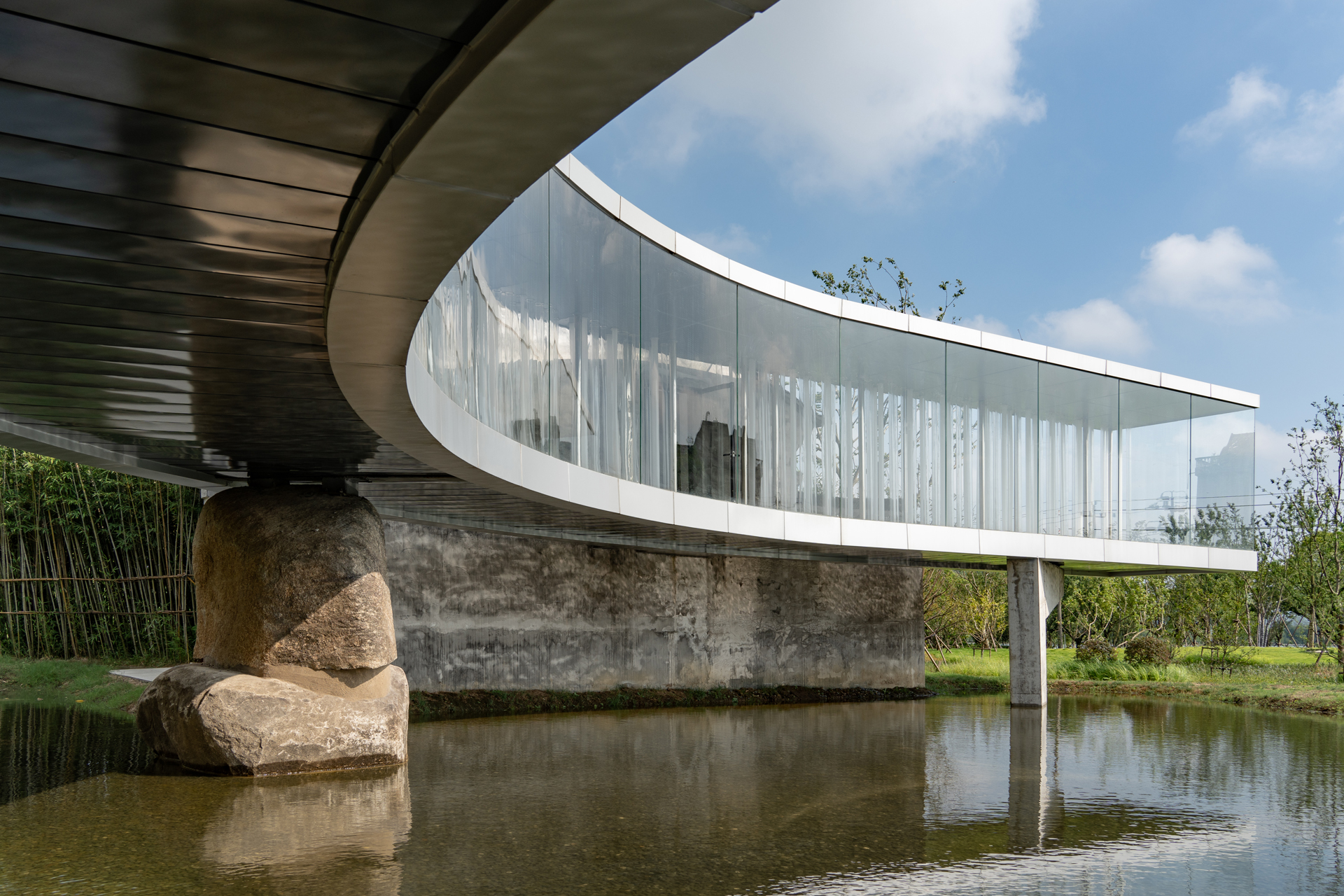
设计单位 十域建筑 Domain Architects
结构设计 和作结构建筑研究所
项目地点 浙江嘉兴
建设时间 2023年3月
建筑面积 245平方米
原状
项目位于嘉兴南北湖边的小山丘前,距离湖边约有百米。两座民国时期的江南天井式小院落在平面上错开,张开了一个6度的夹角,大院子的局部屋顶和墙体已经垮塌。一条雨后才有的小溪从两个院子中间流过,冲蚀了部分地面。项目预期改造为具有茶饮、咖啡功能的景区驿站。目前,项目尚未确定运营方。
The project locates in front of a hill, with a distance of a hundred meters from lake shore. Two houses dating from the 1930s with small courtyards (aka "sky well") were to be connected and transformed into a teahouse and also a rest space for tourists. The operator of the property has not been decided until now.

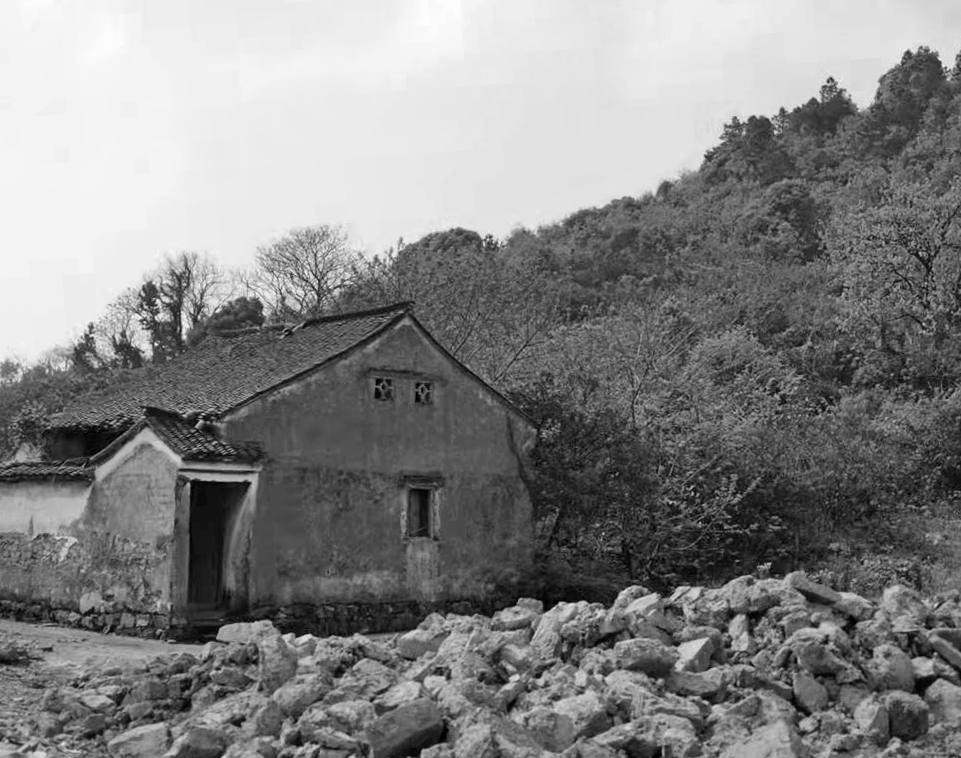
传统老建筑的改造比比皆是,在这个项目中,建筑师希望以传统与当代并置的方式,营造一种前所未有的全新体验。同时,尽最大可能尊重和保留现有的建筑和结构,以轻盈的姿态、冲击最小的方式介入。
The timber-frame structures still remain intact except for the roof of one small volume. To preserve local memories, we decided to keep the old houses and touch them as gently as possible. At the same time, we wanted to create an unprecedented experience with juxtaposition of tradition and contemporariness.
▲ 项目视频介绍 ©张超
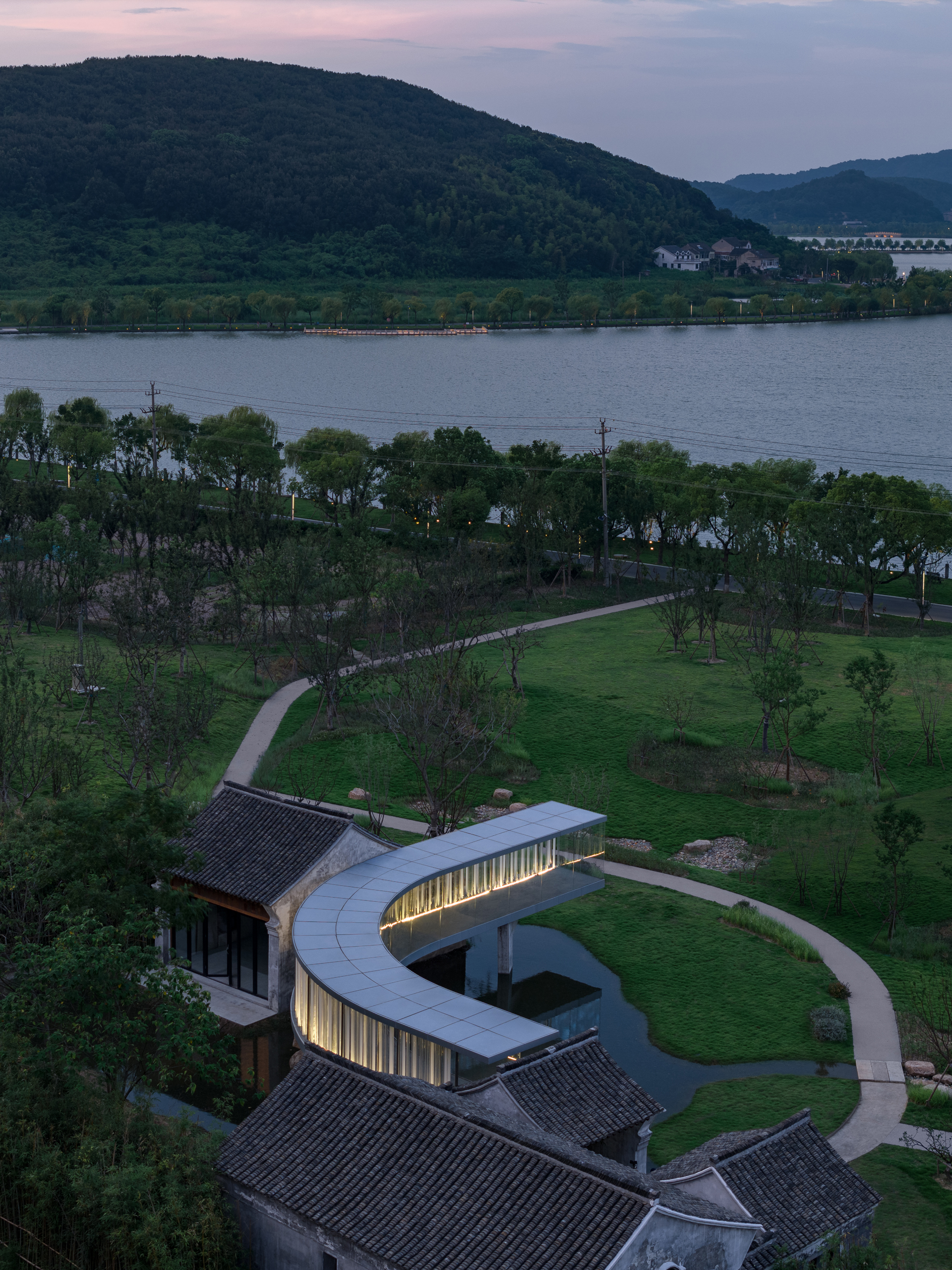
廊桥
南北湖景区以宋代山水美学的范本而闻名。在中国传统山水画中,“廊”与“桥”往往成为点睛元素。廊与桥不止供人通过,也会引人驻留、休憩。廊、桥与山水互为风景。此外,山水长卷的超长长度,也使得欣赏长卷的方式不是一览无余,而是随着卷轴的铺展慢慢品读。观者在时间推进的同时,也在空间中推移。建筑师希望把这种时空推移的体验也带入到本项目中。
The scenic area was famous as a great example of traditional Chinese literati aesthetics. In traditional Chinese landscape paintings, corridors and bridges often became the focal points. They were not only passage ways but also resting places. The landscape hand-scroll paintings are especially famous for their extreme horizontal length, which are not meant to be seen at one glance, but should be read progressively as the viewers unfold the scroll.
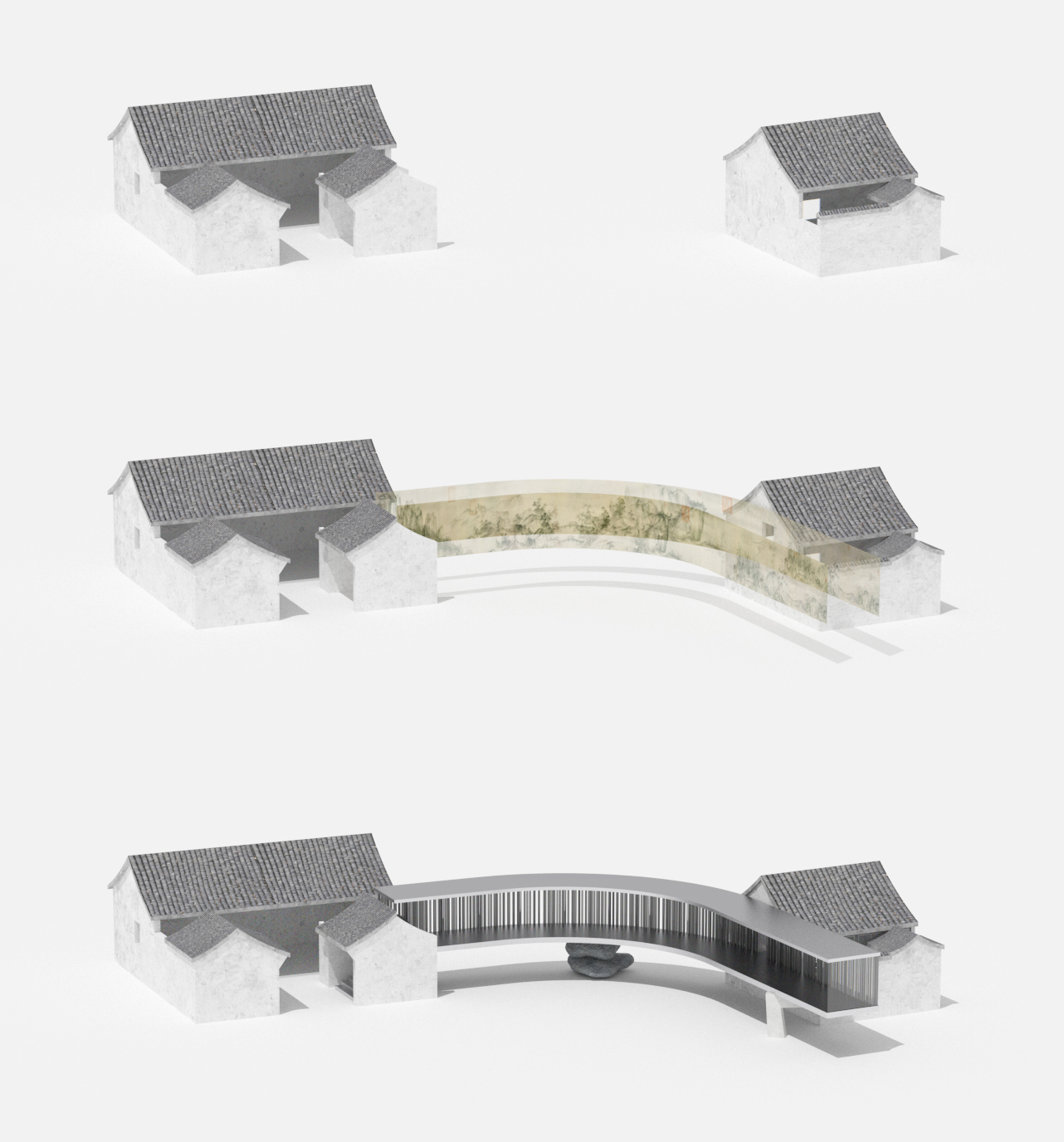
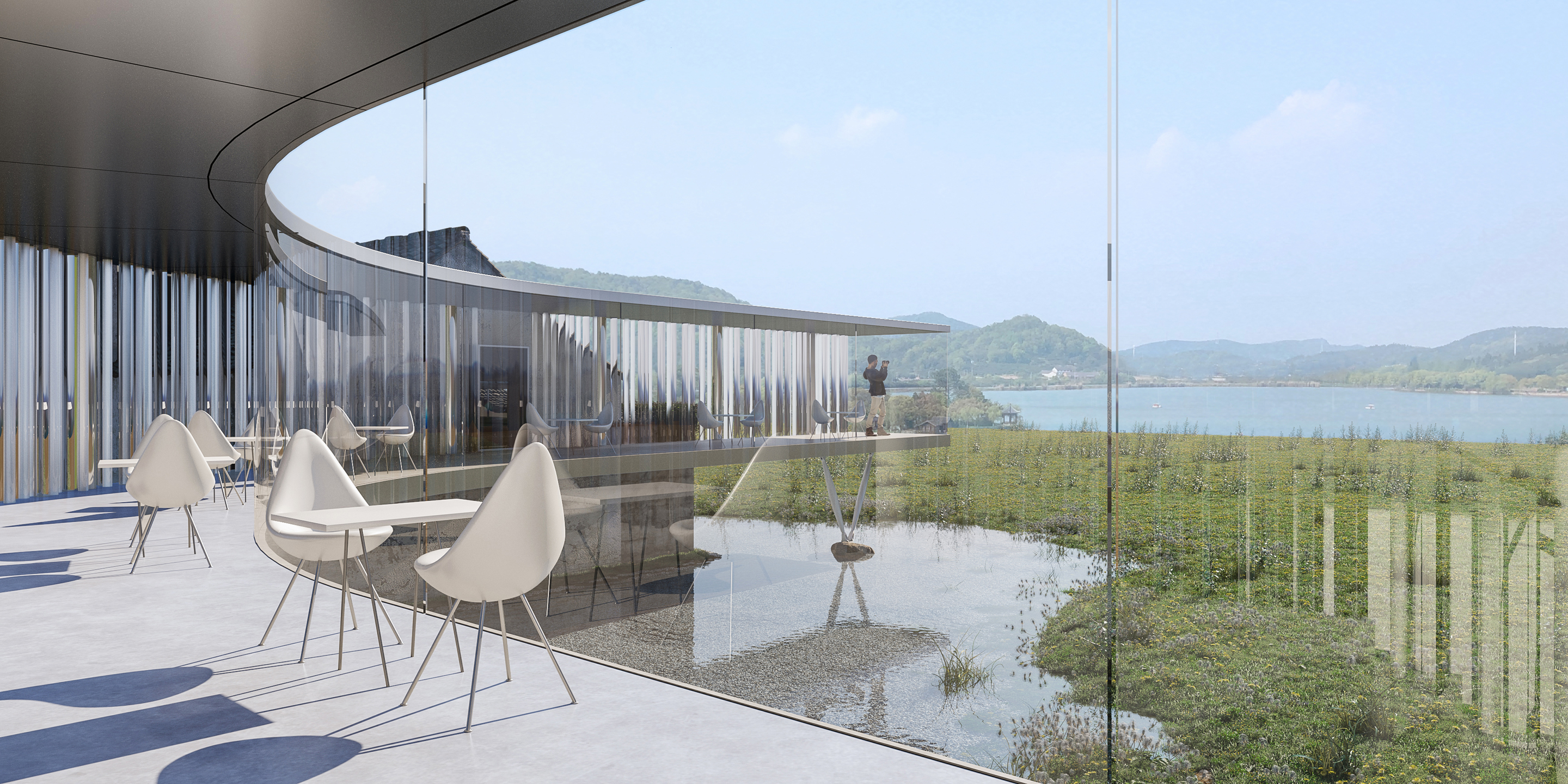
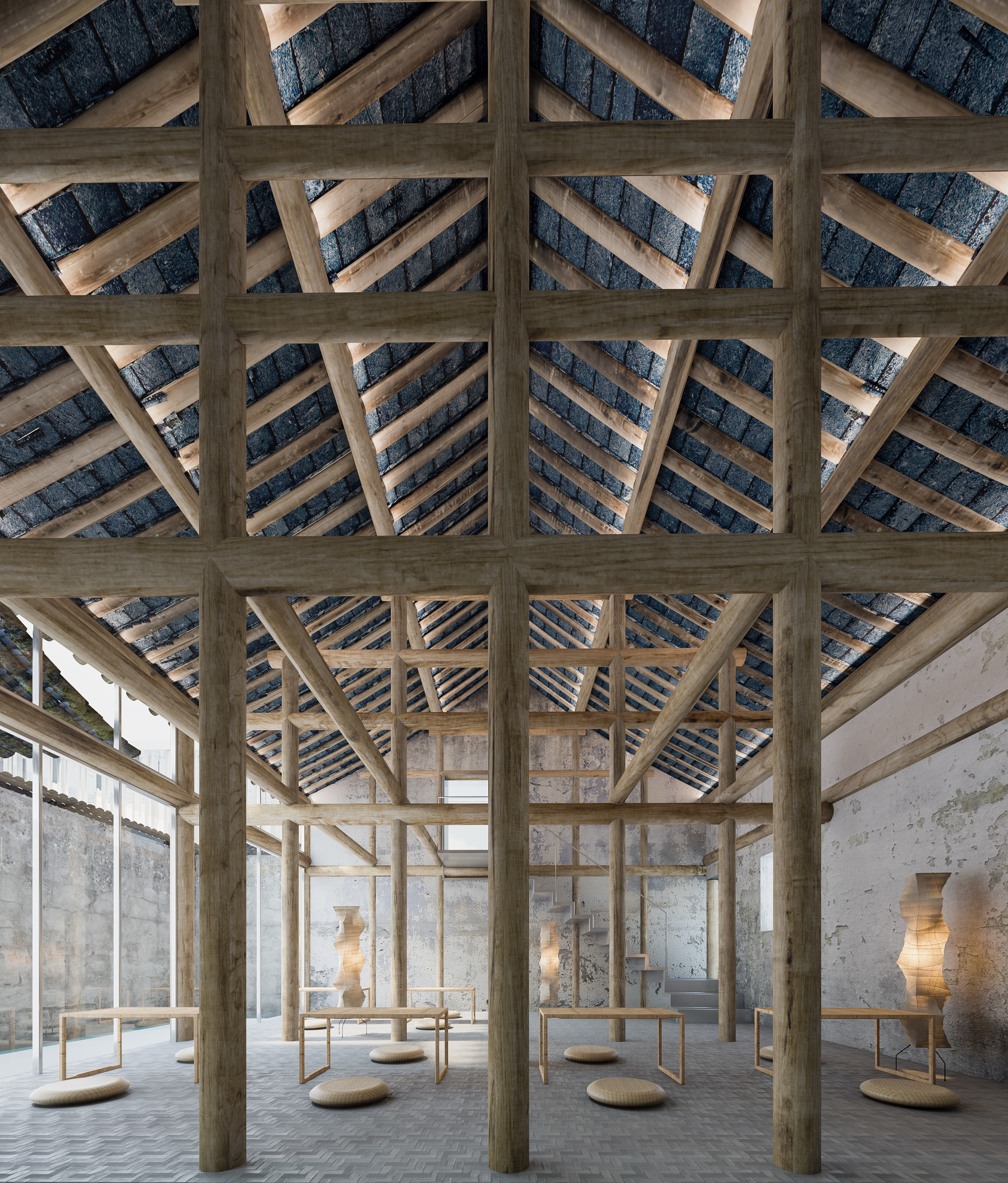
建筑师以一个简约的廊桥联系两个院落:从大院落中屋顶部分坍塌的小体量出发,与小院落的山墙擦肩而过,客人通过山墙上的门洞可以直达小院落的室内。廊桥对老建筑的全部影响,也仅仅限于这一个门洞。在廊桥中行走,一面望水,一面观山,随着弧线的角度变幻而步移景异,山水长卷般的风景徐徐展开。廊桥同时也成为了茶歇空间。
The act generates a sense of ritual. What about reading the actual landscape in such a poetic and introspective way? We connected the two old houses with a curved, elevated bridge-corridor. Starting from a small volume without roof and stopping next to the old wall, the bridge-corridor barely touches the existing houses. Walking along the corridor, guests will experience the shifting views of the landscape, as if they are reading and unfolding a long scroll painting.

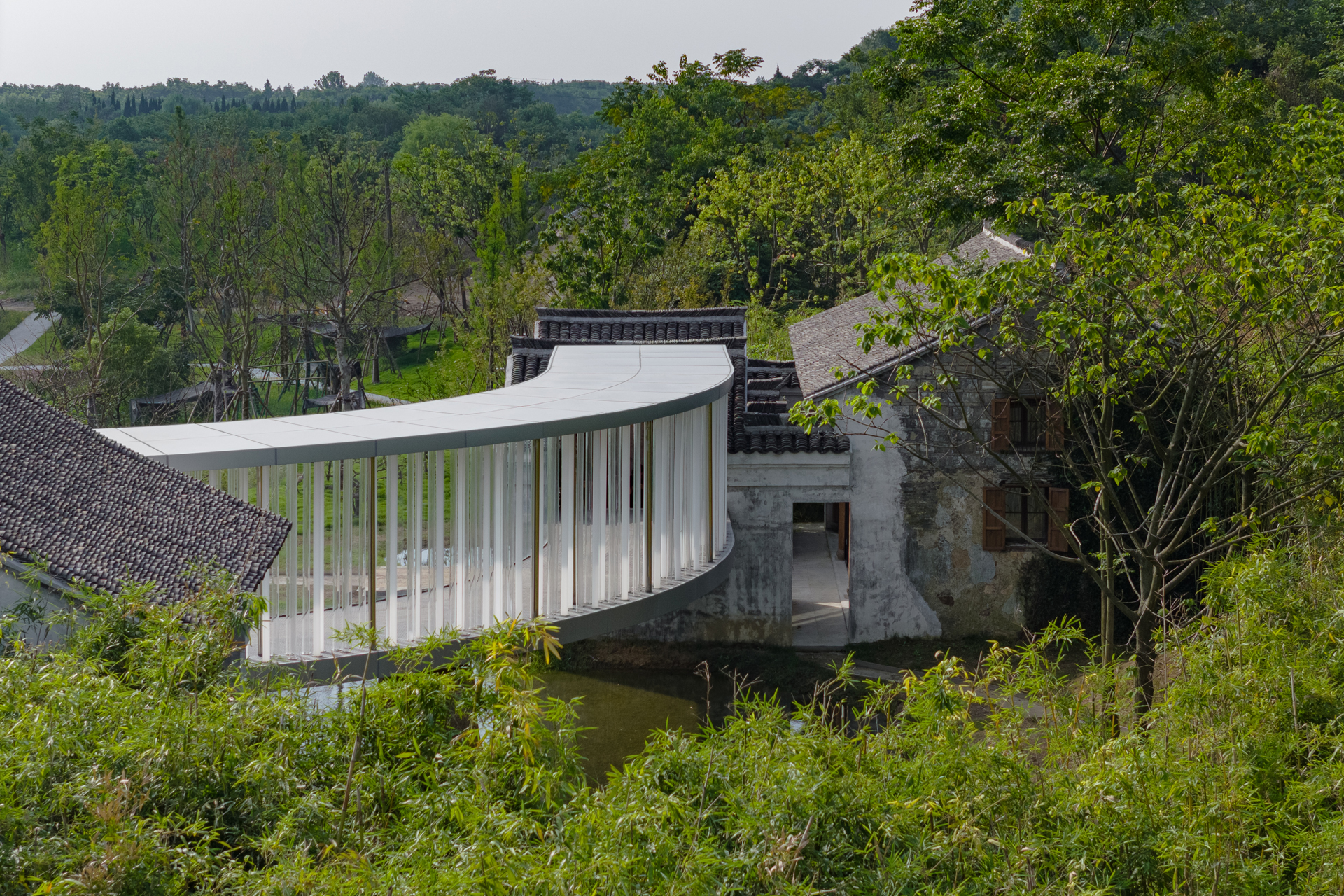

廊桥面湖的一侧为落地玻璃,观景视野畅通而开阔。面向山丘的一侧为三种细柱排成的不规则阵列,镜面、磨砂、透明三种表面形成极为丰富的反射和折射,让滤过的阳光形成迷人的光影效果。其中镜面不锈钢柱为规则排列的承重柱,另外两种细柱的引入则在视觉上完全打乱了承重柱的规则性。细柱间的空隙防止跌落,同时以极佳的自然通风,避免廊内产生高温。廊内的夏季微风习习,冬季则有充沛的阳光。
The lake side of the corridor is fully glazed while the hill side is protected by an irregular array of steel posts and PC tubes (clear and frosted), providing natural ventilation and filtering sunlight into a fascinating effect. The irregularity of the PC tubes completely breaks the rhythm of load-bearing steel posts.
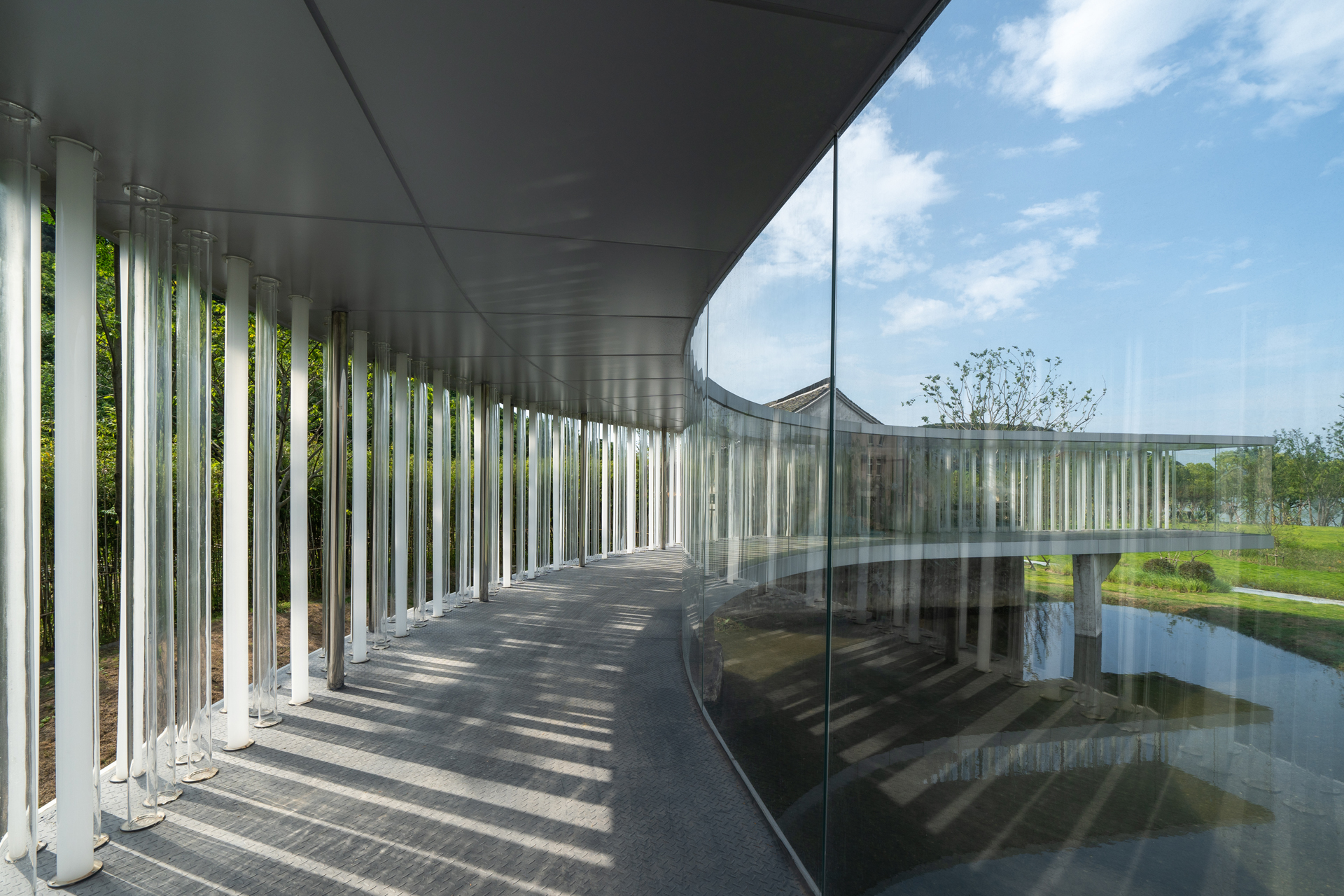
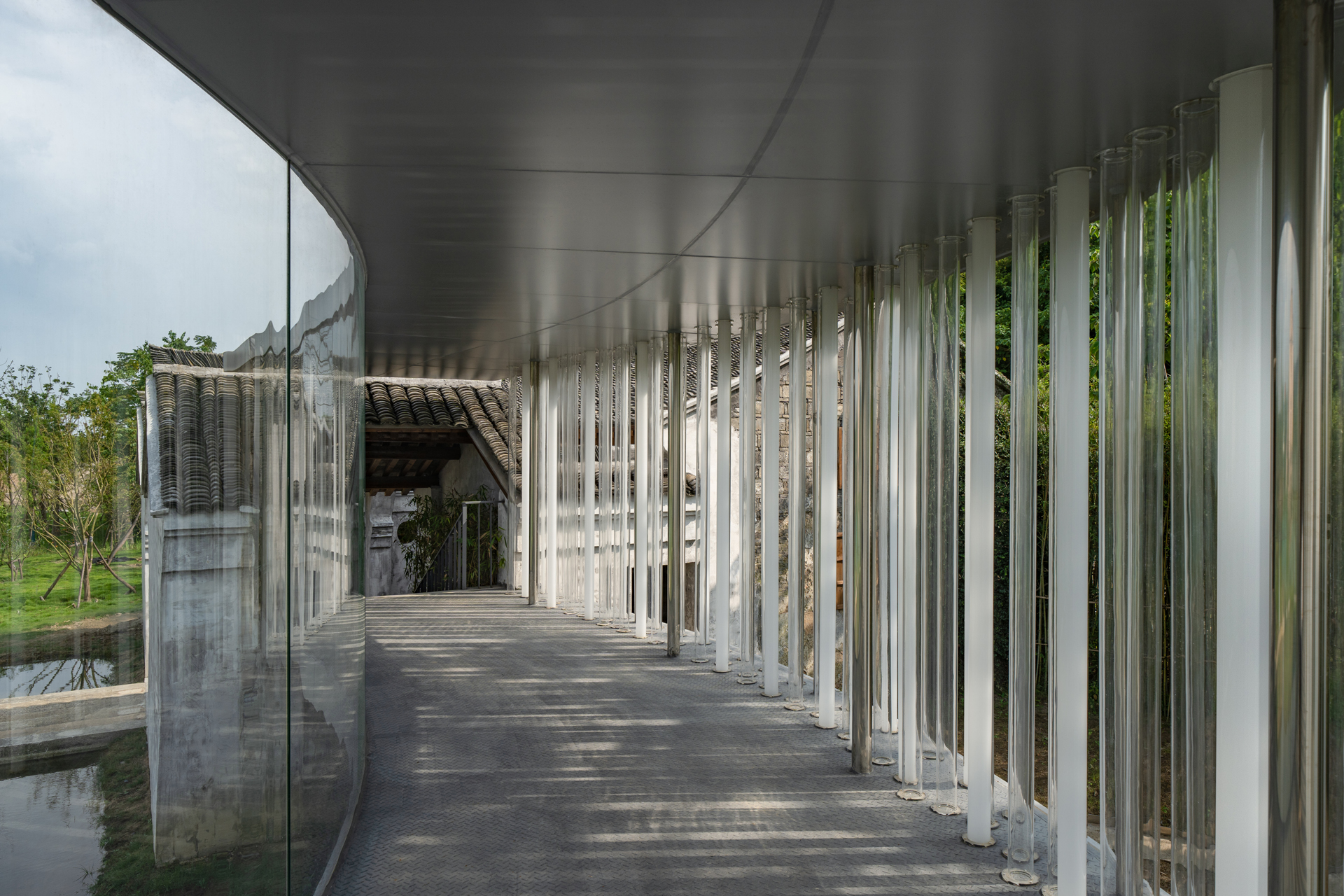
弧形的廊桥并未刻意放大结构跨度来体现轻盈,而是选择在建筑上异化支点的设计策略。大院子的门房体量内的楼梯、中间的当地山石、小院子山墙的侧接、“7”字型的混凝土支墩,以非序列性的组合弱化了支点的存在感与力感,形成一种闲散的、漫不经心的效果。
The structure design strategy did not focus on expressing the long expansion, but producing a variety of supporting forms, from staircases and side-support of a gable wall, to local stone and “7”-shaped concrete structure. The informal, non-sequential design leads to a much more casual and relaxed atmosphere.
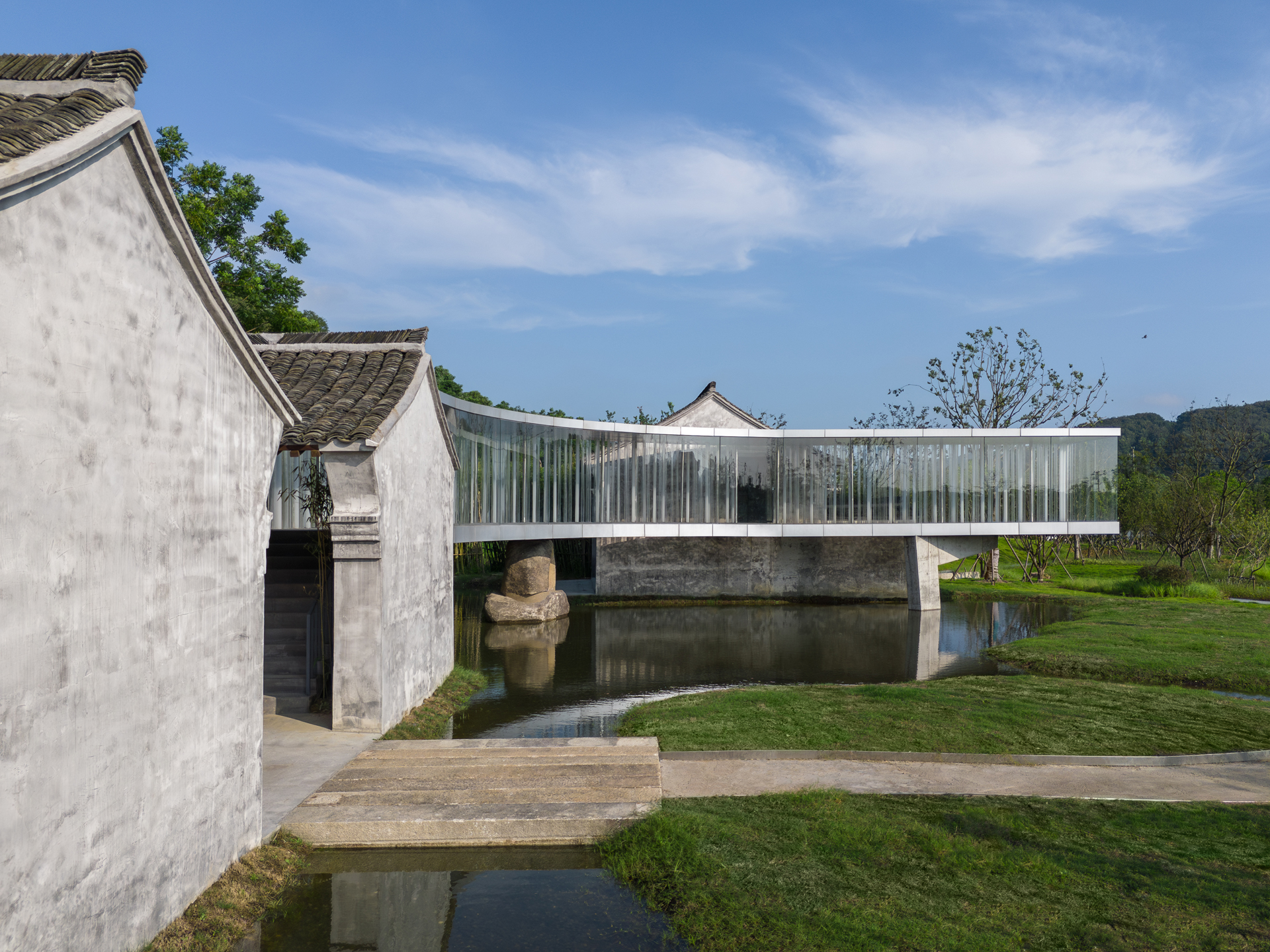

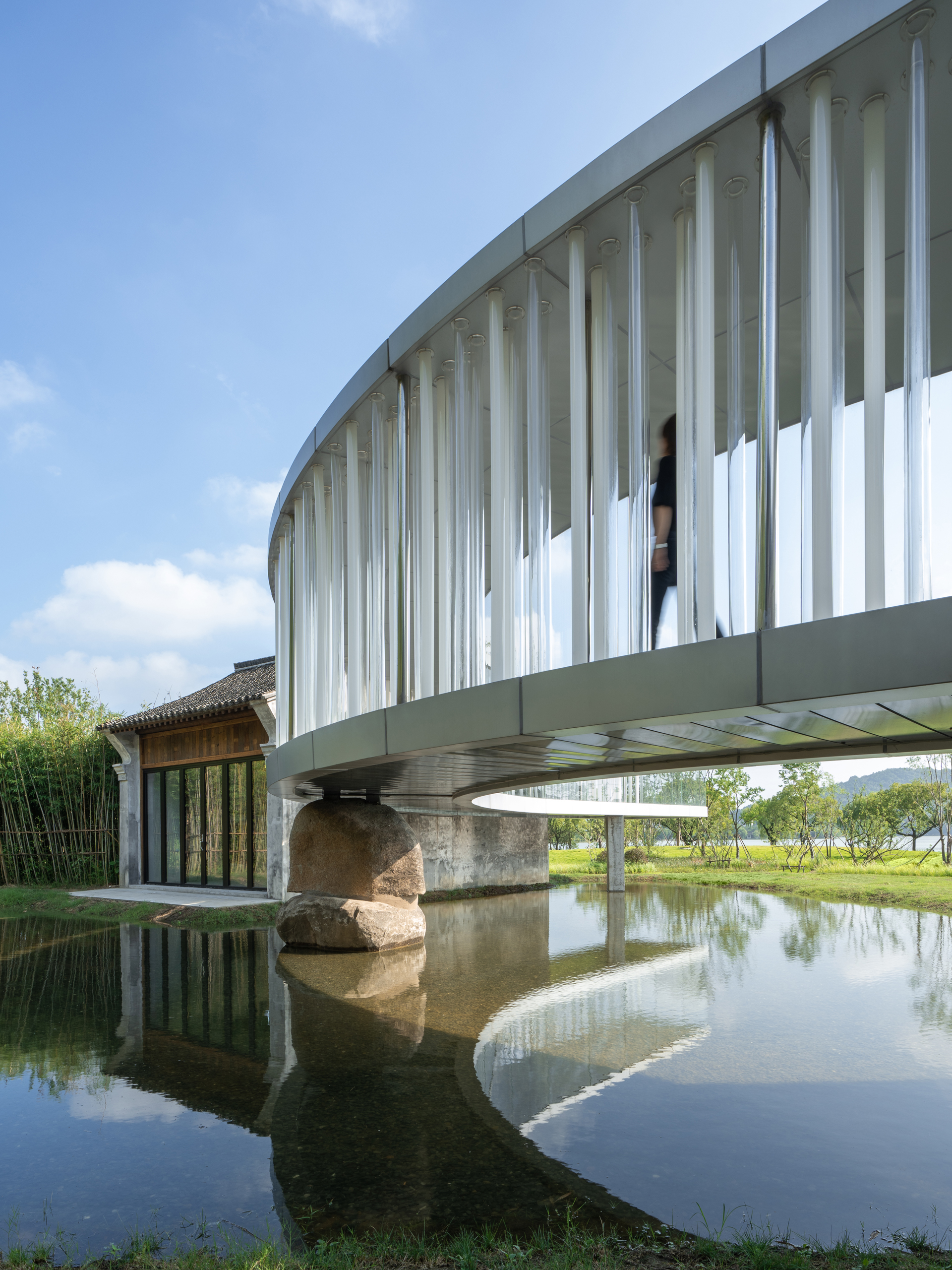
结构*
在湖光山色中,结构轻柔自然地介入,克制冷静地完成建筑空间语言的搭建。廊桥朝湖一侧的景观视角是本项目的重要亮点,建筑师希望尽量打开所有视觉空间,使南北湖的光影充沛的流动在游客眼前。这种需求,让结构工程师自然提出单侧悬挑的结构概念。如何协调整体变形,如何合理构建结构体系的刚度,成为重要的结构问题。
To maximize the view of the lake, the section of the bridge-corridor was designed as a single-sided cantilever. Controlling the overall deformation to achieve structural rigidity had become the major structural issue.
两个院落在各自平面朝向上带有一定夹角。廊桥从一个院落出发,经转弯,与另一个院落侧接;复行几米,悬停于空中。正是这个简单的转弯,使得多品单侧悬挑钢框架在空间上有机会共同产生刚度。基本的结构体系在此刻出现了。
The simple turn of the curve gives the multi-panel single-sided cantilevered steel frame the opportunity to jointly generate stiffness in space.


为最大效率产生空间刚度、利用弧形给空间刚度带来的天然优势,悬挑根部的竖柱在每榀之间采用错位布置。这种布置方式与建筑最初“细密柱”的概念不谋而合,在整个结构系统中还起到了少许的空腹桁架效应,同时在建筑层面回应了空间对自然通风的要求,一举多得。
To take advantage of the curve, the columns were arranged in staggered positions. This arrangement results in a structural system similar to vierendeel trusses. At the same time, it also contributes to enhance natural ventilation.


廊桥横桥方向的变形和稳定,也是需要回答的问题。在廊道的尽端,结合建筑造型的需要,结构设计了“7”字型的混凝土支撑。其中7字型的水平段与廊道沿桥方向尽量保持垂直,以期控制横桥方向可能出现的偏载带来的不稳定倾覆。在廊桥外弧的跨中附近,结构设计师利用建筑师放置的大石块作为廊道支点,有效控制了横桥方向的变形,也缩小了廊道跨度。
At the end of the corridor is a "7"-shaped concrete support, whose horizontal part is perpendicular to the bridge direction, in order to control the overturning caused by possible unbalanced loads in the transverse direction.

自然的石块、廊道起点的竖向支座、院落的侧接点、悬挑尽端的异形支撑,共同托起了轻盈的弧形错位柱单侧悬挑钢框架结构,建筑师所期望的“廊”与“桥”的概念逐步显现。
Near the mid-span of the outer arc of the corridor bridge, the structural designer used the large stones placed by the architect as the fulcrum of the corridor, which effectively controlled the deformation in the transverse direction and also reduced the span of the corridor.

穿行时空的体验
建筑师将两院子之间被流水冲蚀的地块辟为一个浅水池。水边小径和平台、石板桥、老建筑、新廊桥、竹林汀步以及场地原有的树木,在有限的场地里形成了极为丰富的空间关系,复活了中国古典园林的意趣。
The ground between the two houses had been eroded by a seasonal creek. Conveniently, we transformed it into a shallow pond. The path and platform by the water, the stone-slab bridge, the old houses and new corridor, the bamboos, and the existing trees, form enchanting special relationships on a very limited site, evoking the charm of traditional Chinese gardens.
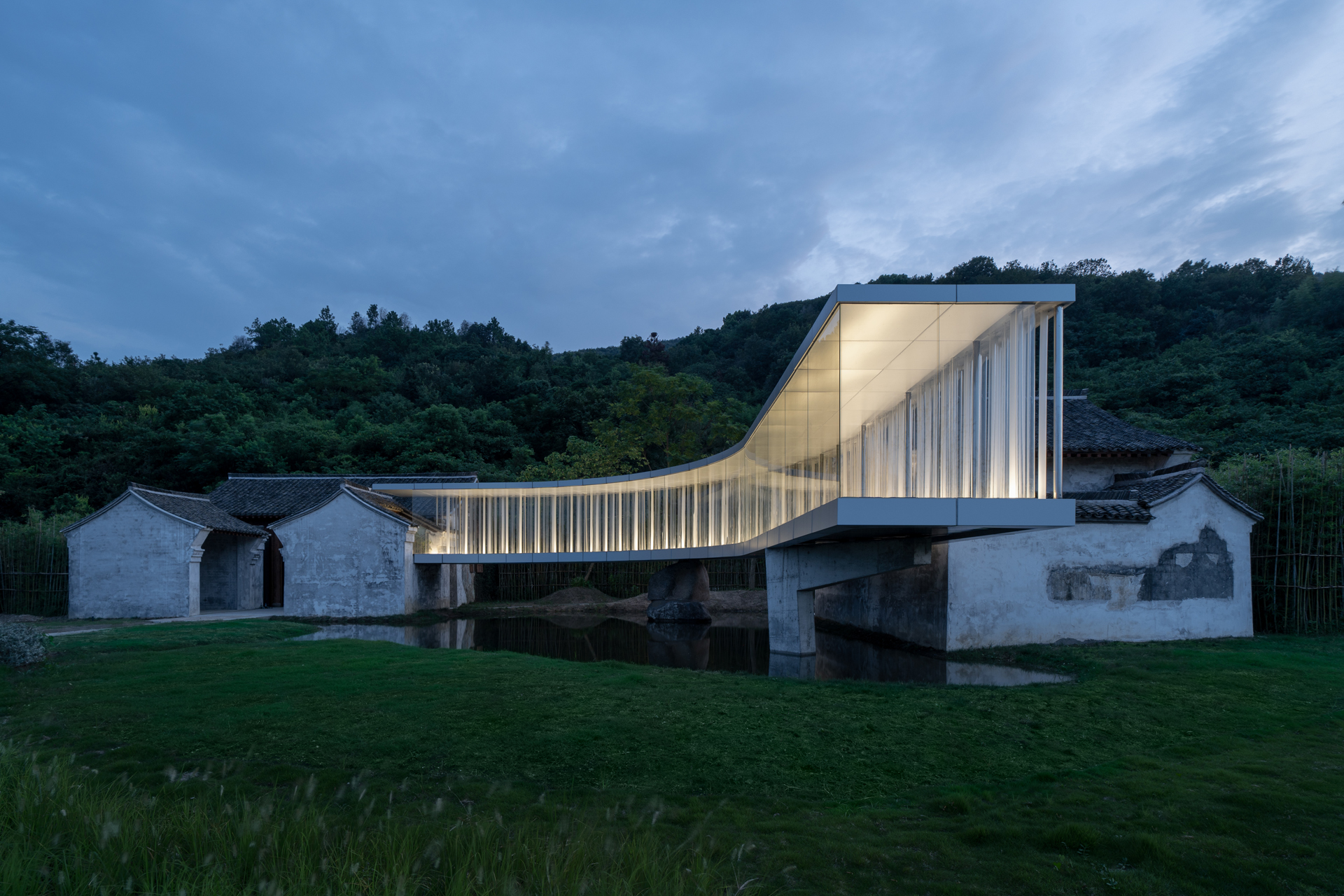
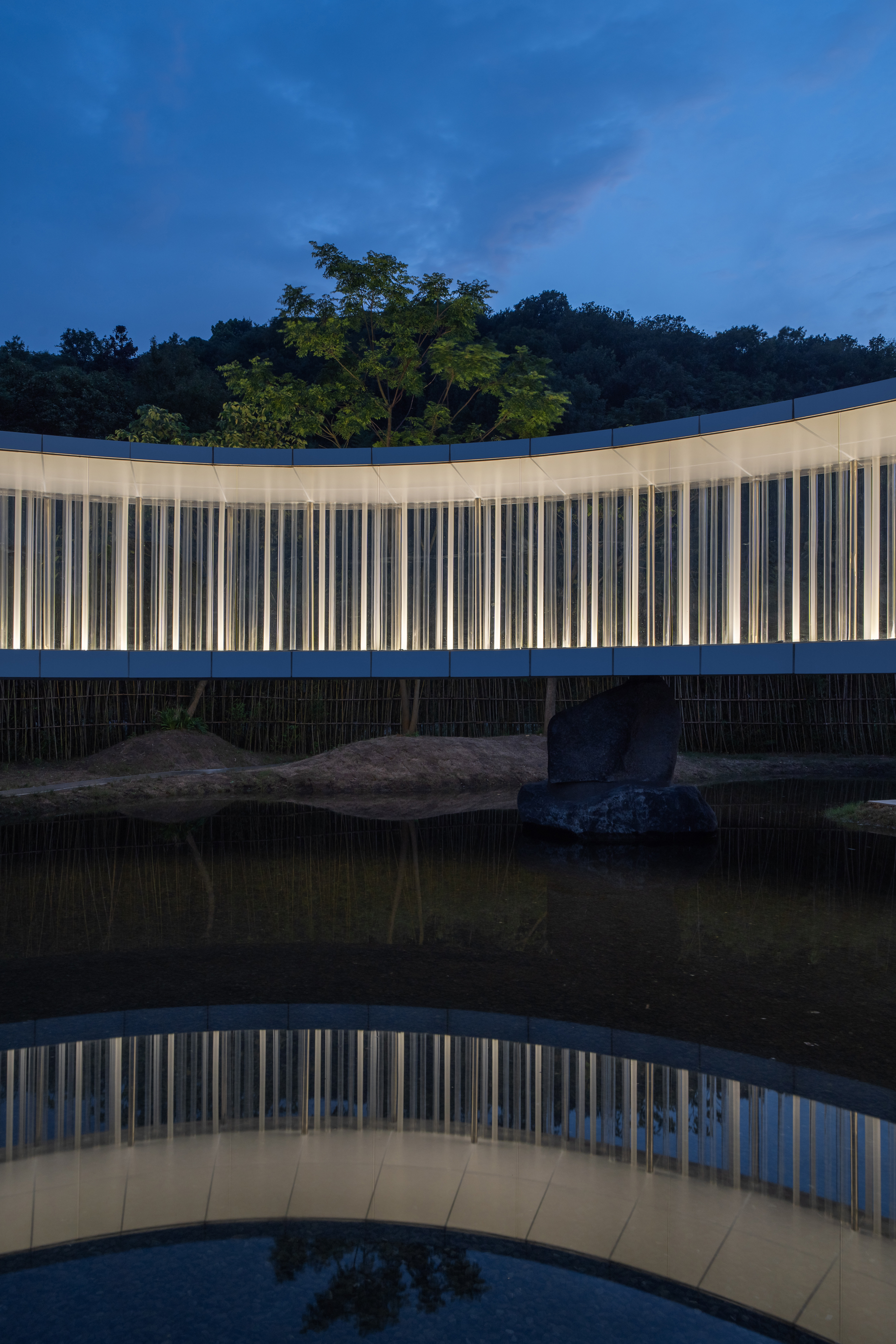
两座老院内完全保留古朴的氛围,钢和玻璃的新廊桥在串联起空间和风景的同时,也串联起两个时代。无论是在内部还是外部,空间推移中产生的强烈的时代特征的变幻与碰撞,让游客在一个小小的驿站中,也能获得穿行时空的体验。
We preserved the pre-modern atmosphere of the old houses. The steel and glass corridor bridges both spaces and ages, creating a time-travel experience for visitors.
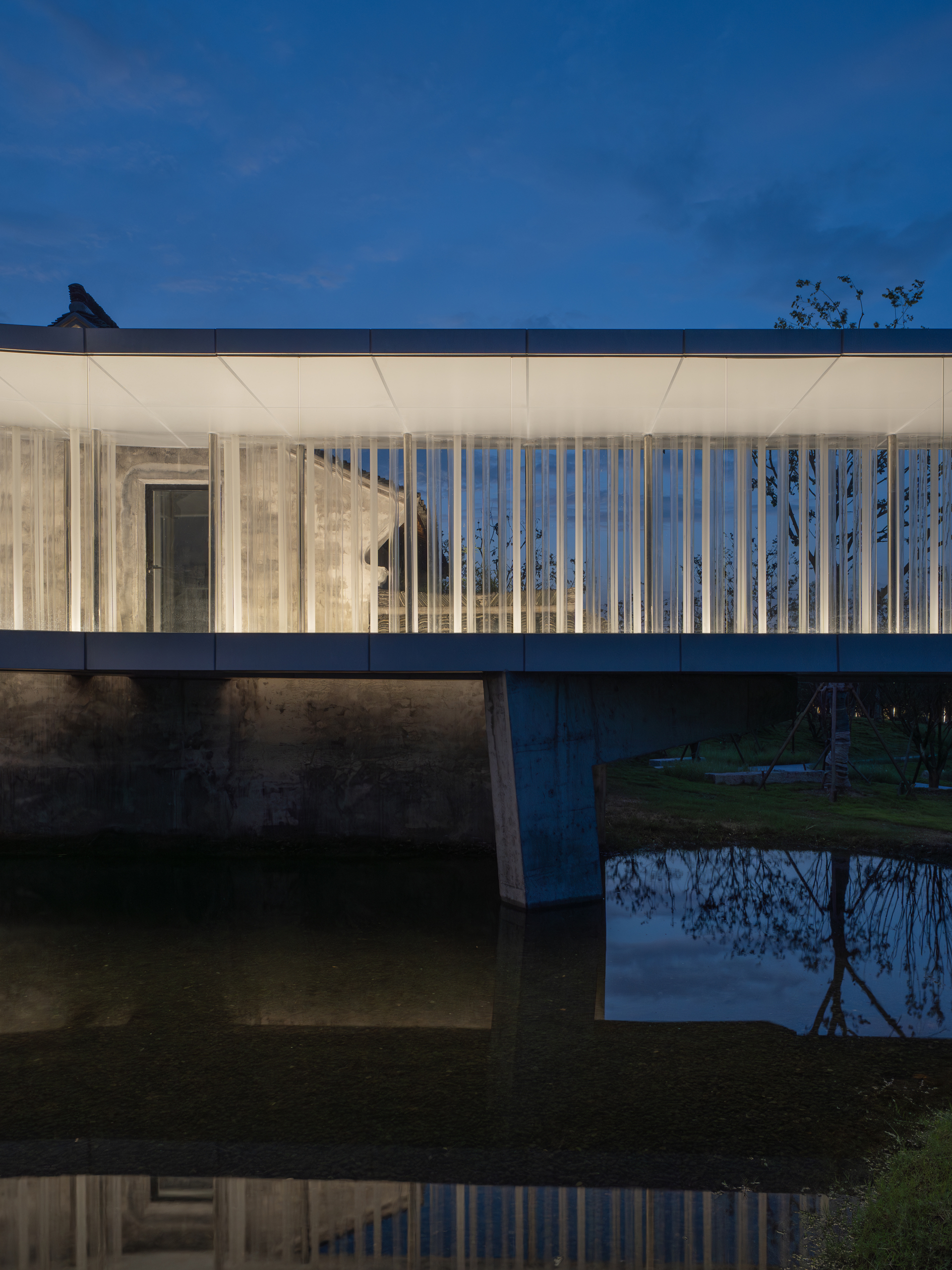
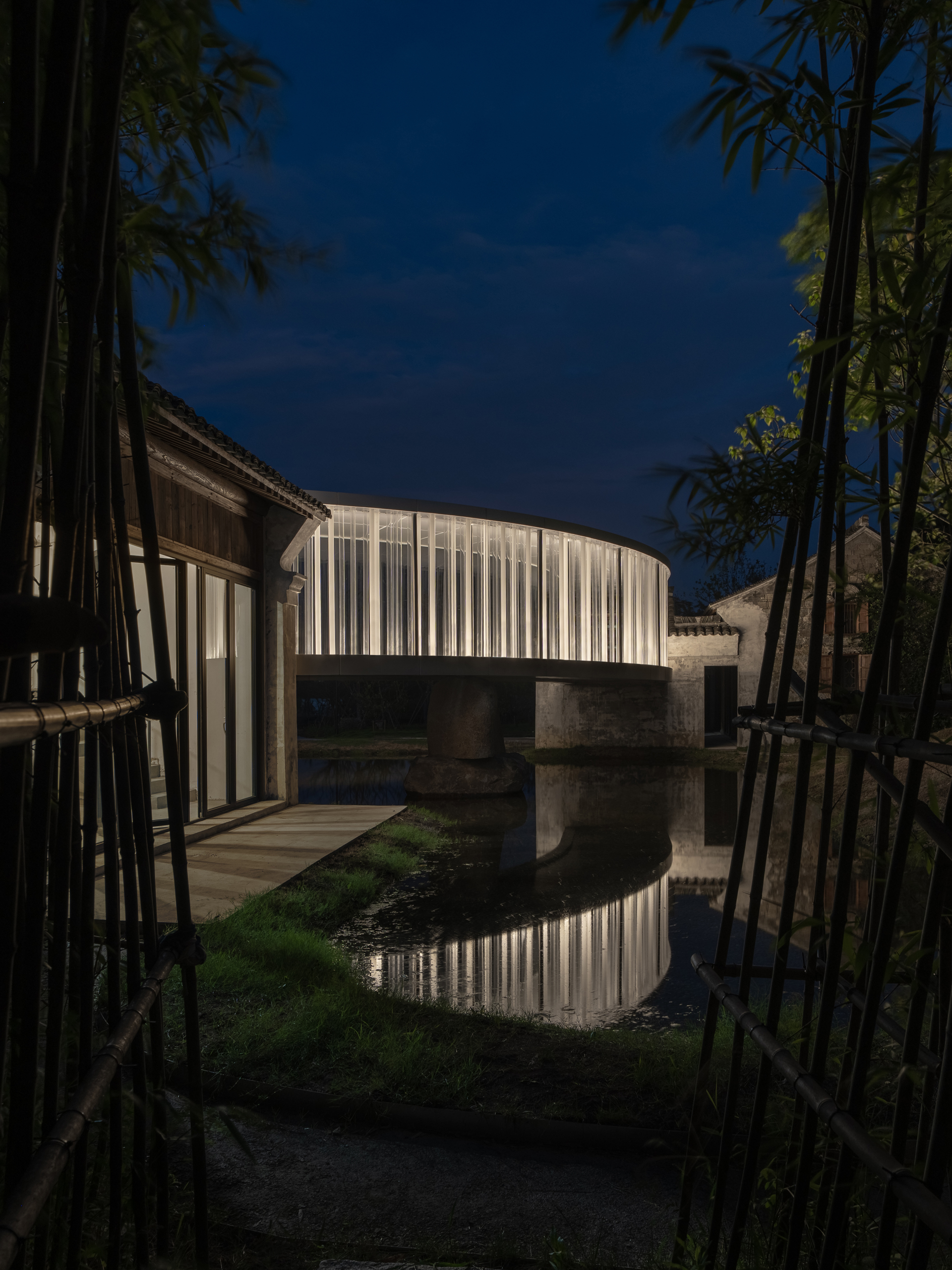
设计图纸 ▽

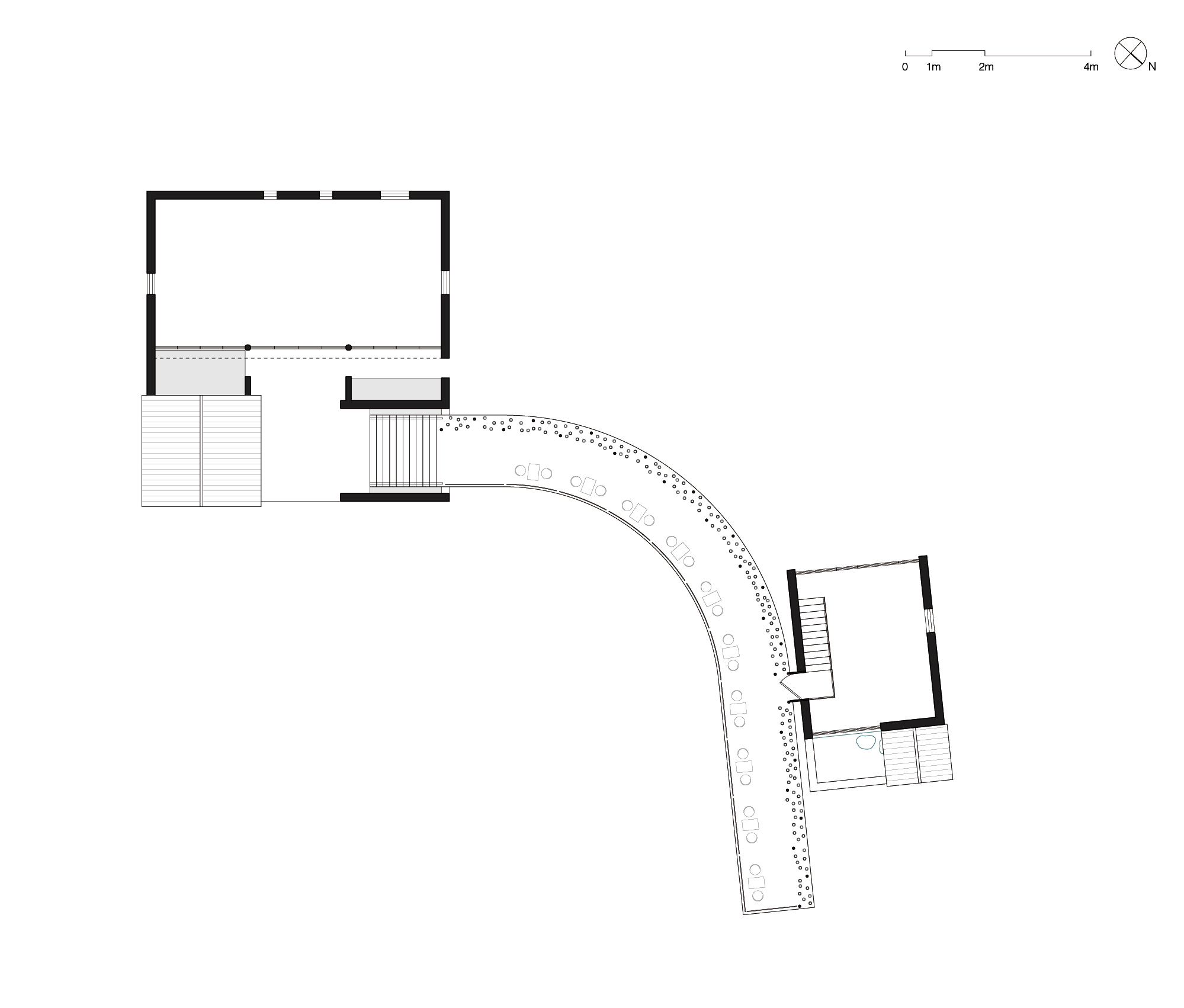
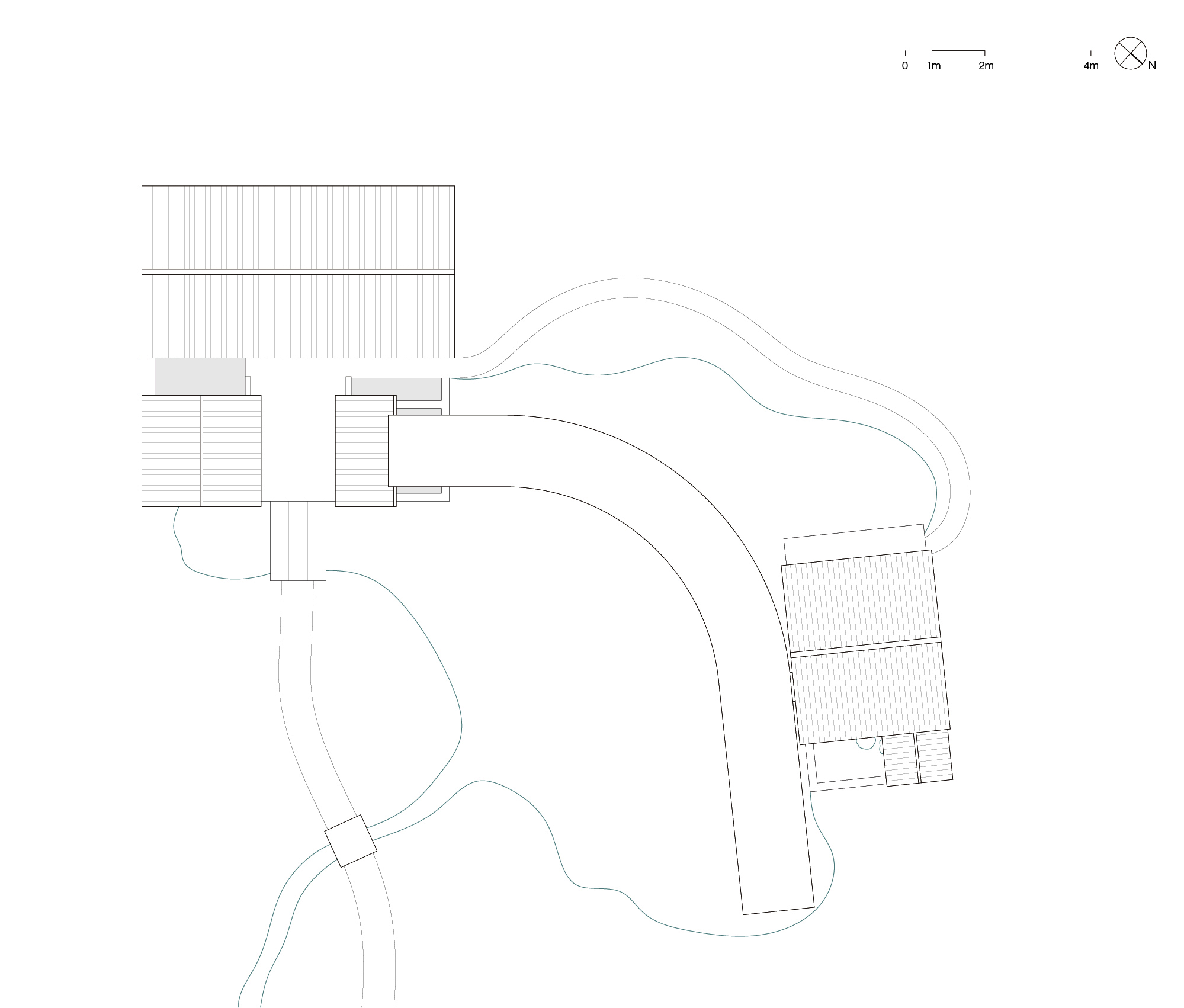
完整项目信息
项目名称:南北湖湖滨茶室
项目类型:建筑/改造/旅游/商业
项目地点:浙江嘉兴南北湖景区
设计单位:十域建筑 Domain Architects
事务所网站:http://domain-architects.com/
主创建筑师:徐小萌
设计团队:徐小萌、Hannah Wang
业主:海盐县南北湖景区投资管理有限公司
设计时间:2021.12—2022.3
建设时间:2022.6—2023.3
建筑面积:245平方米
其他参与者:
结构设计:和作结构建筑研究所
施工图:浙江恒欣设计集团股份有限公司
施工:浙江立信建设集团有限公司
材料:钢、玻璃
摄影:张超
视频版权:张超
* 本部分文字由张准提供。
版权声明:本文由十域建筑 Domain Architects授权发布。欢迎转发,禁止以有方编辑版本转载。
投稿邮箱:media@archiposition.com
上一篇:福斯特事务所最新方案:埃里森科技研究所牛津园区
下一篇:大舍新作:静思之地,陶一球纪念馆